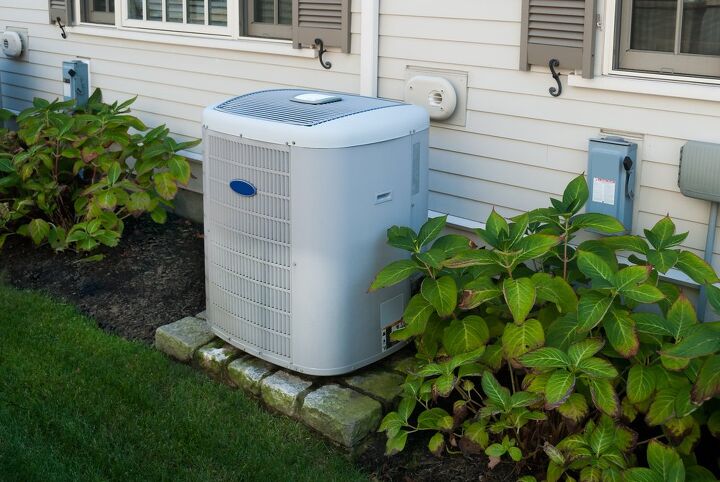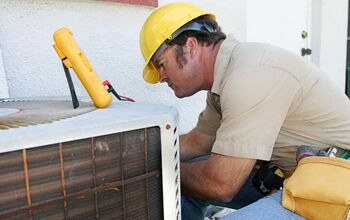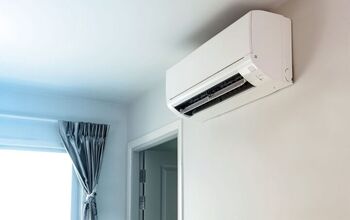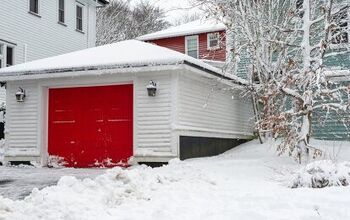Can You Replace Just the Outside AC Unit?

HVAC systems have become indispensable. After all, an HVAC system will provide cool air indoors when it’s hot outside, and then make a room warm and toasty when the temperature outside drops.
If an HVAC system is taken care of properly, the U.S. Department of Energy says it should last for 10 to 15 years. However, plenty of HVAC systems last well over 15 years, especially those that receive a maintenance checkup every six months. The best times to have an HVAC system looked at are right before the summer and right before the winter.
Eventually, an HVAC system will stop working properly because of simple wear and tear. When this happens, you may wonder if you can get away with just replacing the outside unit, as this seems like an affordable course of action. But is this feasible? Such is the main question this article answers.
Most HVAC technicians advise against doing this. A variety of things can go wrong when you replace an outside HVAC unit without replacing the indoor unit at the same time. Moreover, both units need to be made by the same manufacturer. And if the units can’t connect properly, a hazardous situation may be the result.
Don't want to do it yourself?
Get free, zero-commitment quotes from pro contractors near you.

Can You Replace Just the Outside AC Unit?
If your HVAC system has stopped working properly—and it’s clear that the system can’t be repaired—then replacement will be necessary. As tempting as it seems, replacing just the outside unit is not a good move, for the result you’ll be left with is a unit that’s both inefficient and expensive. Moreover, Frankenstein HVAC systems fail often, making them more trouble than they’re worth.
For an HVAC system to run efficiently, the inside and outside units must be connected seamlessly. If one unit has components that the other can’t utilize—or if things don’t fit properly—then the HVAC system won’t be able to run efficiently. For example, both units must share the same SEER rating.
What Is a SEER Rating?
The Seasonal Energy Efficiency Ratio (SEER) essentially indicates how effective an HVAC system is when there’s high demand for either cooling or heating. In the United States, an HVAC system must possess a SEER rating of 13 or higher.
The indoor and outside units of an HVAC system each have a SEER rating, but the SEER ratings are supposed to be the same. Therefore, if you hook up an outside unit to an indoor unit—and the SEER ratings don’t match—you can expect problems down the road.
Imagine putting a supercharged engine in a car that’s full of 30-year-old components; such is like connecting two units with different SEER ratings.
Does the Indoor AC Unit Have to Be the Same Brand as the Outside Unit?
Not only do indoor and outside units have to be the same brand; the models have to be compatible as well. You can’t replace an outside unit with an incompatible model, even if the replacement model is the same brand. There will be different components in the replacement model, and any mismatches will cause the overall unit to not run efficiently.
Also, if you were to replace just the outside unit, you’d be hooking the replacement unit up to an indoor unit that’s older, possibly much older. In this instance, the replacement outside unit would have to compensate for an inside unit that’s old and on its way out, and this would accelerate wear and tear for the new unit. And if the older inside unit utilizes an outdated refrigerant, it’s likely there will be a refrigerant mismatch, and this situation will cause the HVAC to malfunction.
R-22 Refrigerant vs. R-410A Refrigerant
If you still use an HVAC system that was installed before society became a lot more environmentally conscious, it’s likely your system runs on R-22 refrigerant, an agent that’s been linked to the deterioration of the ozone layer.
Modern HVAC systems are no longer made with this hazardous refrigerant in mind, mainly because the Environmental Protection Agency (EPA) banned it and now requires that R-410A refrigerant be used instead. If the interior unit of your home’s HVAC system is built for running on the banned refrigerant—and you replace the outside unit with a unit that’s built to run on the new refrigerant—the system won’t be able to function properly and will eventually fail.
How Much Does It Cost to Replace Just the Outside AC Unit?
On average, replacing an outside unit will cost between $3,500 and $4,000. The cost includes installation labor. If in addition to replacing the outside unit, you want to replace the furnace as well, then you should expect to pay anywhere from $3,500 to $5000. In short, you can expect to pay anywhere from $7,000 to $9,000 for a full HVAC system replacement.
Even though replacing just the outside unit is cheaper than replacing a whole unit upfront, all the downsides discussed already speak to why replacing the entire system is a better option. Why spend $4,000 on a new outside unit—that’ll break soon after—when you can replace the whole system and get 15 or more years out of the new system?
How Long Does an Outside AC Unit Last?
It’s been said already that most HVAC systems last between 10 and 15 years, and that some systems can last even longer if they’re maintained properly. This latter point is what will be focused on here.
Maintaining an outside unit begins with having the unit looked at regularly by a professional HVAC technician. You must also ensure the unit is in the spot that was made for it, and it can’t be obstructed by debris or other inhibitions.
If, for example, your outside unit is covered with leaves, you won’t be able to run it properly. In this instance, you must clean the fins, make sure the unit is level, clean the evaporator coil and drain, and then suction out what’s left with a vacuum. If you take care of your outside unit well, you won’t have to consider replacing it, except for when it and the inside unit are both inoperable.
Can an Indoor AC Unit Run Without an Outside Unit?
The indoor unit of an HVAC system cannot run unless there’s a functional outside unit connected to it. However, you could get a standalone, window-mounted AC system, but this would only provide cool air—not both cool and warm air like an HVAC system provides.
If your HVAC system didn’t have an outside unit, the warm air in your home wouldn’t be cooled down before release. Moreover, there wouldn’t be a spot to release this air. A likely result would be a hazardous exhaust buildup.
Can I Replace an Outside AC Unit Myself?
Unless you’re a skilled, experienced, and comfortable HVAC technician who possesses all the tools necessary to install an outside unit, you should not attempt this on your own. Too many things can go wrong when an inexperienced individual is in charge of installation. For this reason, if you ever need HVAC repair, maintenance, or replacement, it’s best to call a trusted HVAC technician.
Don't want to do it yourself?
Get free, zero-commitment quotes from pro contractors near you.

Related Questions
What signs indicate an outside AC unit isn’t working properly?
If you’ve noticed a strange noise emanating from the HVAC system—and it started soon after you replaced the outside unit without replacing the indoor unit—then this strange noise is most likely a result of the unit mismatch.Another common indication is that the system cannot circulate air properly. If, for example, you want the house to be cool, and instead it remains hot, this is most likely because the air cannot escape through outside unit properly, again because of a unit mismatch.
Which problems do outside AC units experience often?
An outside unit can be adversely affected by debris, animals, human beings, weather, low and high temperatures, and a variety of other factors. If you’re going to install a new HVAC system, make sure you get an outside unit that’s built to last, as these units have to withstand a lot throughout their years of service.

Matt loves everything DIY. He has been learning and practicing different trades since he was a kid, and he's often the first one called when a friend or family member needs a helping hand at home. Matt loves to work with wood and stone, and landscaping is by far his most favorite pastime.
More by Matthew Mountain



























